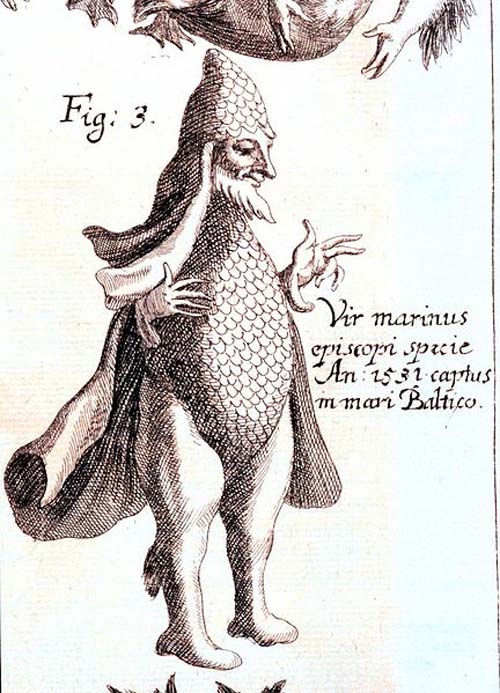Medieval 'Signs and Marvels'
Historian article

Medieval ‘Signs and Marvels': insights into medieval ideas about nature and the cosmic order.
Many aspects of life in the Middle Ages puzzle the modern reader but some are stranger than others. What can possibly explain an event reported from Orford Castle, in Suffolk? This is an amazing tale and was told by Ralph of Coggeshall in about 1205. Ralph reports an incident that happened about 40 years earlier:
Men fishing in the sea caught in their nets a wild man. He was naked and was like a man in all his members, covered with hair and with a long shaggy beard. He eagerly ate whatever was brought to him, but if it was raw he pressed it between his hands until all the juice was expelled. He would not talk, even when tortured and hung up by his feet. Brought into church, he showed no signs of reverence or belief.
The merman eventually escaped when allowed to swim in the sea, despite three lines of nets. Ralph could not decide if the merman was indeed a man, a fish in human shape or an evil spirit hiding in the body of a drowned man.
The monks who wrote the great medieval chronicles occupied a position midway between historians and journalists and their position on that line depended on their personal interest and inclination. As well as recording events from the past up to their own time (using whatever sources of information were available to them and often simply copying existing histories), their other main objective was to record the news and events of their own day. These events were frequently written down as a fairly contemporary record. However, it must be remembered that they interpreted and judged, gossiped and condemned and were often highly selective in both their choice of events to record and the interpretation they placed on them. This was particularly the case if the event in some way affected the religious house of which they were a member. Surviving chronicles range from sober - if at times biased - accounts of political and religious developments, through to more sensational records of signs and marvels. It is this latter type of document which forms the basis of this study. They offer us a view into the mindset of the Middle Ages. They need to be set alongside the evidence such as town trade, church building and manor court records if we really want to get the ‘full flavour' of living in medieval England...
This resource is FREE for Historian HA Members.
Non HA Members can get instant access for £2.75

